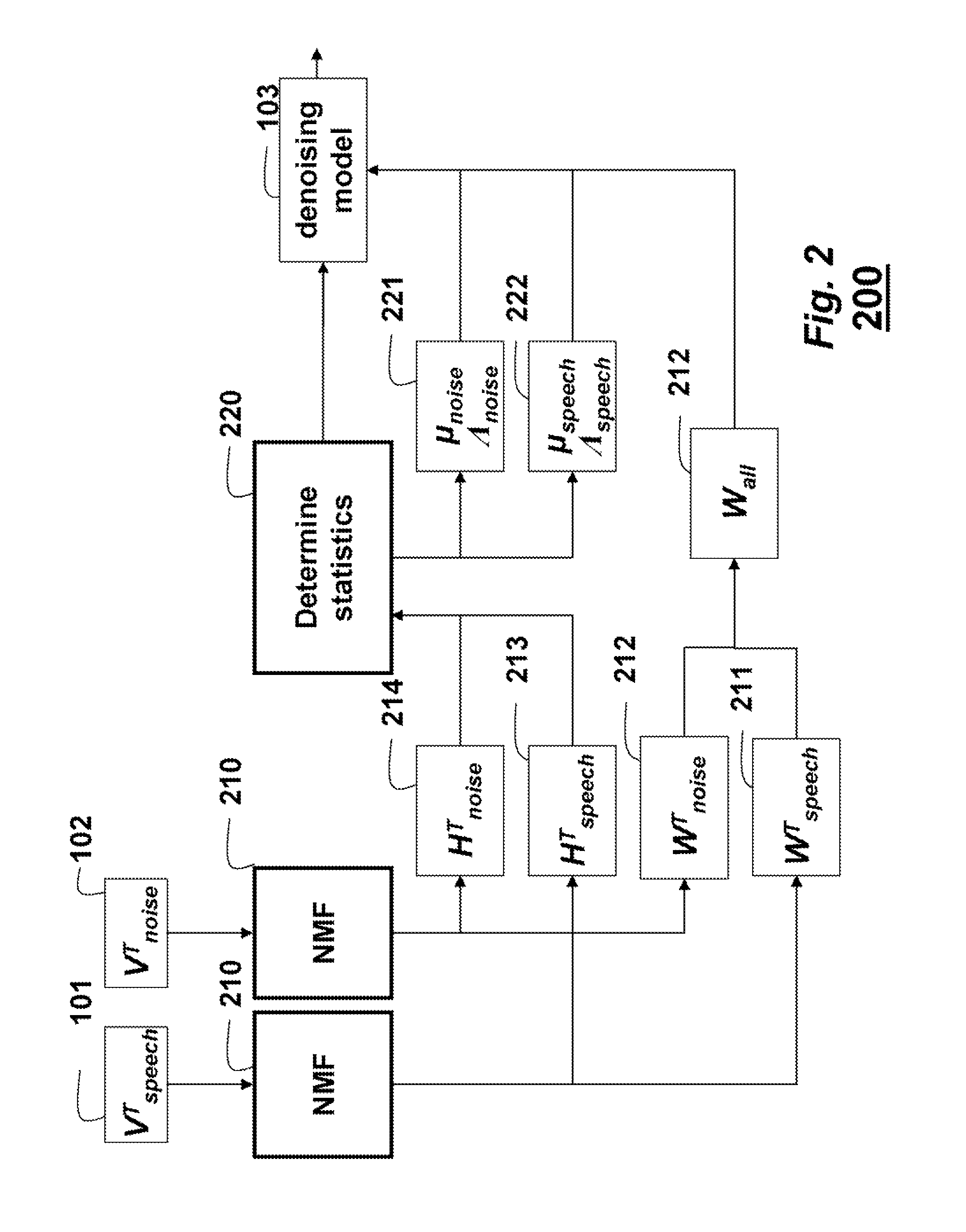Denoising acoustic signals using constrained non-negative matrix factorization
a technology of matrix factorization and acoustic signals, applied in the field of processing acoustic signals, can solve the problems of reducing the performance of denoising, affecting the performance of speech and noise models, and difficulty in denoising time-varying nois
- Summary
- Abstract
- Description
- Claims
- Application Information
AI Technical Summary
Benefits of technology
Problems solved by technology
Method used
Image
Examples
Embodiment Construction
[0017]FIG. 1 shows a method 100 for denoising a mixture of acoustic and noise signals according to embodiments of our invention. The method includes one-time training 200 and a real-time denoising 300.
[0018]Input, to the one-time training 200 comprises a training acoustic signal (VTspeech) 101 and a training noise signal, (VTnoise) 102. The training signals are representative of the type of signals to be denoised, e.g., speech with non-stationary noise. It should be understood, that the method can be adapted to denoise other types of acoustic signals, e.g., music, by changing the training signals accordingly. Output of the training is a denoising model 103. The model can be stored in a memory for later use.
[0019]Input to the real-time denoising comprises the model 103 and a mixed signal (Vmix) 104, e.g., speech and non-stationary noise. The output of the denoising is an estimate of the acoustic (speech) portion 105 of the mixed signal.
[0020]During the one-time training, non-negative...
PUM
 Login to View More
Login to View More Abstract
Description
Claims
Application Information
 Login to View More
Login to View More - R&D
- Intellectual Property
- Life Sciences
- Materials
- Tech Scout
- Unparalleled Data Quality
- Higher Quality Content
- 60% Fewer Hallucinations
Browse by: Latest US Patents, China's latest patents, Technical Efficacy Thesaurus, Application Domain, Technology Topic, Popular Technical Reports.
© 2025 PatSnap. All rights reserved.Legal|Privacy policy|Modern Slavery Act Transparency Statement|Sitemap|About US| Contact US: help@patsnap.com



